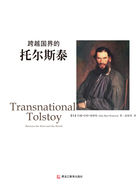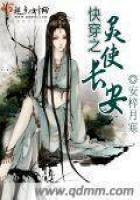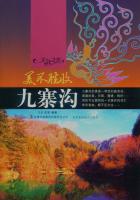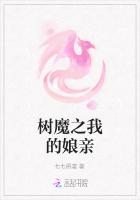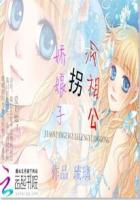When Humans Are Hungry:Barbarity in Galapagos
To refute the meat-eating people's assertion that in eating of fesh they“follow the conduct and direction of Nature”and that they were born to“an inclination to such food”,Plutarch demands,[……]do you then yourself kill what you would eat。 But do it yourself, without the help of a chopping-knife, mallet, or axe—as wolves, bears, and lions do, who kill and eat at once。Rend an ox with thy teeth, worry a hog with thy mouth, tear a lamb or a hare in pieces, and fall on and eat it alive as they do。(156)
In this powerful and ruthless challenge, Plutarch must have felt perfectly secure from counterattack, since he believed that human beings had long past the stage of barbarity。 In the course of human history, the capabilities to use tools and to eat meals cooked are counted as important landmarks of humanity and crucial steps for civilization。However, Plutarch had missed an important premise, namely, only when people live in times of comfort and abundance will they eat with civil manners;otherwise, when food is in severe shortage, human beings can be as ferocious as any other predators。So although Plutarch advocates vegetarianism, he does not advocate it for the sake of animal welfare, but for the preservation of humanity。Deep down in his understanding, as in that of many thinkers and philosophers, there is still lingering complacency that human beings are superior to animals。Killing animals by hand and chewing on animals raw can only be a token of beastliness, the retrogression to barbarity。
Vonnegut's novel Galapagos(1985)toys with this assumption。 The novel is basically a story of food, a theme that has eluded most critics。Set in the squalid, desperately poor city of Guayaquil, Ecuador, in November 1986,the story smells of hunger from the start。As its backdrop, a world-wide financial crisis is driving many countries bankrupt。When the story opens, the crisis is sweeping across South American countries, pushing millions of people to the brink of starvation。Ecuador, a country mostly of lava and ash, hence highly dependent on foreign investment and tourism, goes bankrupt overnight, leaving its people struggling for survival in hunger pangs。Meanwhile, Peru declares war on Ecuador。Amidst such apocalyptic situations, six characters check in the Hotel El Dorado, anoasis of first-world luxury for tourists and business people, to get ready for a trip to the exotic Galapagos Islands, an educational voyage that has been advertised worldwide for several months as the“Nature Cruise of the Century”。Although at the beginning they are safely enclosed in the hotel, each gnawed by their own troubles, they soon fnd themselves surrounded by starving and restless crowds of local people, who, upon the news that the“Nature Cruise of the Century”is cancelled, eventually break in and loot everything。
In a furry of fear and desperation, the tourists are sent by the hotel manager to the cruise ship, Bahia de Darwin, on which they start their one-way journey to the Galapagos。 Before they get aboard, the ship, a large, newly built luxury liner, is assaulted by a storm of starving and angry mob and has everything stripped of, amenities, equipment, and all the good food prepared for a hundred passengers。So when the main characters board the ship, they are thrown into a dire situation of lacking。Like the local Ecuadorians and millions of people in Africa, Asia, part of Europe, and other South American countries, they are soon faced with the threat of hunger。
To verify the signifcance of food in the human civilization, the ghost narrator says,“Take it from somebody who has been around for a million years[meaning himself]:When you get right down to it, food is practically the whole story every time(G 177)”。 After the fashion that characterizes the book, he puts in a famous quotation from Mandarax, the latest development of the pocket computer:
Quoth Mandarax:
First comes fodder, then comes morality。
Bertolt Brecht(1898—1956)(G 177)
The quotation succinctly and appropriately summarizes a central tension of the novel:Before the food problem is solved, there is no roomfor morality。 The satirical undertone is obvious and it mocks the human hypocrisy in the name of morality。At the same time, however, it lays bare a stark, existentialist human reality:however advanced human civilization has become, people can become as wild as any other predator when in want of food。
A。 The Sailors and the Colombianos
The novel depicts four major scenes of food foraging。 The frst one is a deion given to a class of students by Mary Hepburn, one of the six tourists and a middle-aged high school teacher of biology, about how the sailors of the sailing ship era abused the trust of the great land tortoises on the Galapagos Islands:
Sailors would capsize them without fear of being bitten or clawed。 Then they would drag them down to waiting longboats on the shore, using the animal's own useless suits of armor[namely, their hard shell]for sleds。They would store them on their backs in the dark, paying no further attention to them until it was time for them to be eaten。(G 161)
The second is the scene of how the Colombian crewmen of a stranded freighter treat a dairy cow。 They have been marooned for weeks at the Guayaquil waterfront for want of means to buy food or fuel and are fnally provided through illegal commerce with provisions, including a spent dairy cow。The narrator gives a very detailed deion of how they hoist the cow aboard from the tug boat:
It was interesting how they hoist her。 They didn't use a sling or a cargo net。They made a rope crown for her, wrapped around and around her horns。They embedded the steel hook at the end of the cable of the crane in the tangled crown。And then the crane operatorup above reeled in the cable so that the cow was soon dangling in thin air-in an upright position for the frst time in her life, with her hind legs splayed, her udder exposed, and with her front legs thrust out horizontally, so that she had the general confguration of a kangaroo。(G 211)
In the two deions, we see the familiar attitude of studied detachment in the representation of cruelty, as we first find in Breakfast of Champions。 But this time, there are much stronger shades of sarcasm and indignation。The author, either in the voice of the intelligent and provocative science teacher, or in the voice of the curious spectator-narrator, puts up an appearance of light-heartedness and impassivity at the subject matter, trying to contain his anger。In the case of Mary Hepburn, he actually allows the scientifc-minded teacher to play with the students'spontaneous outrage and sentimentalism at the cruelty of human beings in their treatment of“such trusting creatures”。She would wait for them to speak up and then tells them“that the natural order had dealt harshly with such tortoises long before there was such an animal as man”(G 162)。Thus the anger and sentiments are played down by scientific objectivity and a note of determinism。
In the case of the narrator, the word“interesting”suggests his on-looker perspective in watching the human torture of the animal。 However, the exhibition of the suffering and awkwardness of the pathetic creature is so uncivil that he can hardly make a laugh。Whereas he does make a remark that“[t]o certain sorts of big brains back in those days[referring to human beings],her experience with aviation might have been something to laugh about”(G 212),referring to the ungainly posture of the cow dangling in air, with the weight of her entire body depending from her neck, we do not hear his own laughter。Instead, he immediately adds,“She was anything but graceful”(G 212)。We can infer his feeling of sorrow for the cow and shame for the human beings。The pronoun“she”instead of“it”intensifes the signifcation of inhumanity of the exhibition, with theimplied association of the cow with a human mother。The deion of the udder being exposed is particularly shame-ridden, calling to mind the possible humiliation and agony if such cruelty and rudeness is done to a human female。
The feeling of sympathy for the cow and anger at the crewmen becomes stronger and more explicit when the narrator goes on to describe the condition of the cow after she is put down。
And when she was set down on the deck of the San Mateo, she was so severely injured that she could no longer stand。 But that was to be expected, and perfectly acceptable。Long experience had shown sailors that cattle so treated could go on living for a week or more, would keep their own meat from rotting until it was time for them to be eaten。What had been done to that dairy cow was a shorter version of what used to be done to great land tortoises back in the days of sailing ships。
In either case, there was no need for refrigeration。(G 212)
The last sentence in a separate paragraph unmistakably debunks the meanness, selfshness, and cruelty of humans。 According to ethicists, the most immoral behavior is to prolong the suffering of animals unnecessarily。Here, just for the selfsh desire to eat fresh food and solve the diffculty of refrigeration, they keep the animal in pain for weeks。
As if in an effort to set right the wrong done to the animal, the author has the“happy Colombianos”blown to bits by a rocket while“chewing and swallowing some of that poor cow's meat”(G 212)。 Peru has declared war against Ecuador and a fighter-bomber pilot has mistaken San Mateo for the Bahia de Darwin。In a jocular tone, the narrator concludes the story of the cow:“So it might be said that the Colombianos had treated the cow abominably, but that retribution had been done swift and terrible, thanks largely to the big-brained inventors of danger”(G 212)。All alonghis narrative, the narrator has been either criticizing or ridiculing the“big brain”of human beings, but here, for the justice of the cow, he makes the frst positive remark about it, even though the abhorrence of its dangerous invention is easy to discern。
The eating of the land tortoises and the cow is similar in essence to the cases discussed in the two proceeding sections, that is, they are demonstrations of the human cruelty to the other animals。 Although the sailors and the Colombianos eat them out of necessity, that they are in earnest need of the animals'flesh for food, they inflict too much unnecessary pain on the animals, both of whom are entirely defenseless and at their disposal。Moreover, in their extremely disrespectful treatment of the animals, we see clearly the anthropocentric arrogance and the ensuing tendency toward despotic sadism。They gloat over the pain and discomfture of the animals when they drag the tortoises on their back and hoist the cow vertically。The more these creatures suffer, the greater their pleasure is。So their cruelty and callousness are even worse than the Cartesian concept of animals as automata。In both cases, Vonnegut's sympathy for the animals is defnite。His indignation at the human cruelty is evident。
B。 The Kanka-bono Girls and Mary Hepburn
In the other two cases of animal killing, however, the situations are more complex。 One is the Kanka-bono girls'killing and eating of Kazakh, Selena's seeing-eye dog;the other is the killing of the wild animals on the Santa Rosalia Island。
As mentioned earlier, the passengers on the ship of Bahia de Darwin soon face the problem of food。 It turns out that the Captain of the ship knows nothing about navigation or the exact location of the Galapagos Islands, and the frst mate on whom navigation entirely relies has deserted the ship before it set off。What is more, the mob that loots everything on the ship does not spare the compass。As a result, the ship loses its way andwanders in the sea for days。Finally, everybody begins to consume their own substance。
There are ten passengers on the ship besides the Captain。 Four are originally booked tourists:Mary Hepburn, the high school teacher with a master's degree in zoology;Selena MacIntosh, a blind,18-year-old girl with a seeing-eye dog Kazakh;Hisako Hiroguchi, a Japanese woman of 26,large with baby;James Wait, a con-man who has swindled 17 widows of their money and is unluckily struck by a heart attack while escaping the mob, which claims his life not long after the ship sets off。The other two guests at the Hotel El Dorado, Zenji Hiroguchi, Hisako's computer-genius husband, and Andrew MacIntoch, Selena's rich father, are both killed accidentally by a soldier that is overtaken by a fit of schizophrenia。The other passengers on the ship are six Kanka-bono girls, ranging in age from 5 to 9.Mary runs into them in the Hotel El Dorado where they are asking for food from James Wait。They are orphans of poor Native Indian parents who are killed by the pesticide the white people spray from airplanes onto the Amazon rainforest。Judging from this cast, one fact is clear, that is, none of these passengers, except the Captain, are physically robust and ft for survival。However, it turns out that these people become the last tribe of humanity and are to become the ancestors of the future mankind-a joke Vonnegut plays with Darwin's theory of natural selection。
After the ship has churned in the sea for fve days, everybody becomes“ravenous”。 In the eye of the ghost narrator who has no need for food, the passengers are now“slaves of fear and hunger”(G 253)。Then Kazakh, the seeing-eye dog of Selena, is missing。Without any pretense of suspense, the narrator tells us that it is killed by the Kanka-bono girls。The deion he gives is gruesome:
The Kanka-bono girls had stolen her while Selena slept, and choked her with their bare hands, and skinned and gutted her with no other tools than their teeth and fngernails。 They had roasted herin an oven。Nobody else knew that they had done that yet。(G 243)
This is almost the very barbarity with which Plutarch challenges the self-complacent meat-eating people, with the only exception that the girls roast the meat before eating instead of gnawing it raw。 The barbarity is particularly intensifed in view of the dog's gentleness:Kazakh is a very obedient dog, never barks or makes trouble;when Selena sleeps on the ship, she uses the dog as her pillow。
Nevertheless, despite all the tender deions of Kazakh's amiability and intimate relation with Selena, the narrator shows little intention to accuse the Kanka-bono girls or sentimentalize for the dog。 He does make a reference to the Kanka-bono girls'insensibility, ten pages later, by saying that“the Kanka-bono girls were gnawing the bones of their innocent sister Kazakh”(G 252),making the killing and eating comparable to cannibalism。Yet, somehow the mood of anger and sadness is deliberately constrained。Immediately after the narration of the dog's death, the narrator puts in,“She had been consuming her own substance anyway。By the time they killed her, she was skin and bones”(G 243)。In other words, the dog is not having a gorgeous time anyway。The killing only ends her suffering faster。He then makes a long speculation about the possible destiny of the dog, if the girls hadn't killed her。Even if she survived the hunger and made it to the Santa Rosalia Island, he says,“she wouldn't have had much of a future—even in the unlikely event that there had been a male dog there”,because“[s]he had been neutered, after all”(G 243)。The best she would accomplish is to give Hisako’s baby soon to be born“infantile memories of a dog”。“Under the best of circumstances,”the narrator goes on,Kazakh would not have lived long enough for the other children born on the island to pet her, and to see her wag her tail and so on。 They wouldn't have had her bark to remember, since Kazakh never barked。(G 243)
What the narrator seems to be driving at, I think, is that the dog does not suffer much loss from the death。 After all, she is not living a full life as a dog even when she is alive。As the narrator remarks in another place,“Kazakh, thanks to surgery and training, had virtually no personality”(G 98)。She is merely a symbol of the dog, to say the best。The narrator's emphasis that the dog is neutered and that she never barks brings us back to an earlier chapter where Kazakh is frst introduced to us:
Kazakh never barked or played with other dogs or investigated interesting smells or noises or chased animals which had been the natural prey of her ancestors because, when she was a puppy, big-brained human beings had showed her hate and withheld food whenever she did any of those things。 They let her know from the frst that that was the kind of planet she was on:that natural canine activities were against the law—all of them。
They removed her sex organs so that she would never be distracted by sexual urgencies[……](G 47-8)
The deion is a report of the typical practice of domestication and pet keeping。 Behind the docility on the part of the animal and the affection on the part of the owner, there is horrible cruelty and manipulation for the advantage of dominance。In view of this, it becomes clear that what deprives Kazakh of the worth of living, instead of the Kanka-bono girls, is her white masters。As a matter of fact, the earlier deions of Kazakh sound much more critical than the depiction of the Kanka-bono girls'killing。To utilize her as a seeing-eye dog, human beings have confscated all the joy she is entitled to by nature, turning her into a mere eye-seeing tool, always“wearing her harness and handle”(G 78)。The abuse is hardly better than the killing。
In its function of leaving“infantile memories of a dog”,Kazakh is paralleled to the Indiana state park that Mary Hepburn took as“a livingmuseum”of wilderness when she was young(G 222)。 It is a“patch of what the area used to be before Europeans decreed that no plant or animal would be tolerated which was not tamed and edible by humankind”(G 222)。To a larger extent, the Kanka-bono girls also belong to the category of token。Before the six girls make their appearance, there are constant references to the“elusive Kanka-bonos”(G 84,113,119,120)。We are told that it is an indigenous tribe living in the Ecuadorian rainforest, being encroached by the white civilization and pushed close to extinction。To make use of their exotic folk culture for commercial advertisement, the American tour agency has arranged the characteristic Kanka-bono fre dance as a feature performance to entertain the guests for the“Nature Cruise of the Century”。The Kanka-bonos are predominantly Indian, but they have Negro ancestors as well—“African slaves who had escaped into the rain forest long ago”(G 153)。Therefore, the Kanka-bonos are the living monument of all the sins the white oppressors have committed:slavery, colonialism, imperialism, and the capitalistic economic exploitation。
When Mary finds the six girls in the Hotel El Dorado, they are the only survivors of the tribe。 All the rest are killed by insecticides sprayed from the air。So like Kazakh and the Indian state park, the Kanko-bono girls are the remnants of history, the only samples of an extinct species。More signifcantly, like the dog and the park, they are the incarnation of imperialist oppression, the victim of the hegemonic ideology of supremacy of the white Europeans over the natives, of culture over nature, of man over the beast。In this sense, precisely, the Kanka-bono girls and Kazakh are truly sisters。
Another important factor that makes the Kanka-bono girls'killing of the dog tolerable is that they kill when they are extremely hungry。 They kill out of the basic need for food。For the same reason, Mary Hepburn and the Captain become bloodless killers on the Galapagos Island。
When Mary Hepburn fnally spots land after days of straying in theboundless ocean, the passengers of Bahia de Darwin are overjoyed。 The frst thing that comes to the mind of the Captain is to see if the island is populated by animals“he and the others could cook and eat”(G 259)。Once ashore, he and Mary Hepburn reap a harvest, using Mary's blouse and James Wait's shirt for“grocery bags”:
They wrung the necks of boobies。 They caught land iguanas by their tails, and beat them to death on black boulders。And it was during this carnage that Mary would scratch herself, and a fearless vampire fnch would take its frst sip of human blood。(G 260-1)
That night, the starving passengers“had quite a feast”on the Bahia de Darwin:
There were roasted land iguanas stuffed with crabmeat and minced fnches。 There were roasted boobies stuffed with their own eggs and basted with melted penguin fat。It was perfectly delicious。Everybody was happy again。(G 261-2)
The next morning, the Captain and Mary go ashore again, and this time they take the Indian girls along。 They go for another food gathering。
They all killed and killed, and hauled corpses and hauled corpses, until the ship's freezer contained, in addition to James Wait[who is dead for quite some time now, of heart attack],enough birds and iguanas and eggs to last for a month, if necessary。 Now they had not only plenty of fuel and water, but no end of food, and good food, too, as well。(G 262)
It is curious to note that for such elaborate and intensive deion of the killing and gathering, all of Vonnegut scholars and critics remain negligent。 None of them has given much attention to the details。The reason for their neglect, I think, is due to their stubborn preoccupation withthe“human affairs”only, with the kaleidoscopic thematic concerns that crisscross the novel。After all, there are enough human-centered themes to deal with:war, madness, injustice, deception, technology, racism, and above all, the“big human brain”。For most of the critics and scholars, the scene of killing on the island is simply a minor detail that counts for little。
In light of animal studies, however, no images of animals can be dismissed as unimportant。 The ubiquity of animals in Galapagos insistently demands our full attention。A close look at them may reveal clues to new aspects of the book or insights to the understanding of the main themes。After all, there is another prominent theme in the novel—evolution and natural selection。
There can be three levels of speculation in regard to the scenes of killing on Santa Rosalia。
Firstly, on the level of basic needs, like the Kanka-bono girls'killing of Kazakh, Mary Hepburn's and the Captain's killing of the island inhabitants is fully justifiable, because it is conducted out of sheer necessity。 What they do properly conforms to the natural law。There is enough discussion of their hunger to prepare us for what is going to happen。In Chapter 33,when the narrator makes a mention of the Maine lobsters preserved in the hold of the Bahia de Darwin, he says,“There was this about them, at any rate:They were like human beings in that they could eat almost anything, if they had to”(G 183)。The savage way the Kanka-bono girls kill Kazakh also foreshadows further bloody killing, under extreme conditions, which is severe hunger in the passengers'case。On this level, there seems little room for ethical judgment。As the quotation from Bertolt Brecht goes,“First comes fodder, then comes morality”(G 177)。
However, from the perspective of the island animals, the coming of the human killers is undoubtedly a disaster。 Living on the island in peace and isolation for millions of years, these animals have never seen a predator and they are not prepared for one。They have never been somadly slaughtered。Even during the sailing boat period, the species that is most likely to be hurt is limited to the great land tortoise。At least in the novel, there is no mentioning of other species that are exploited。But Mary Hepburn and the Captain spare nobody but the ugly marine iguanas,“believing them to be inedible”(G 261)。To the defenseless island animals, they are no other than ferocious invaders and bloodless slaughterers。
The Galapagos Archipelago is located in the Pacific Ocean on the Equator。 It is famous for the diversity and uniqueness of its animal species。The land tortoises, the marine and land iguanas, the fnches, the blue-footed boobies, the frigate birds, the fightless cormorants, and the penguins are all characteristic animals on the island。Kurt Vonnegut had a fascination with the place and actually made a personal visit to it in 1982.The defenselessness and seeming stupidity of the blue-footed boobies amazed him。More than once did he express this amazement。In a speech made two months after his return at St。John the Devine cathedral in New York, for example, he joked about“those beautiful and fearless and utterly stupid seabirds the defenseless blue-footed boobies”,“I could have unscrewed their heads, if I had wanted to”(FWTD 141-2)。Even before the visit, in the 1979 novel, Jailbird, he has the hapless protagonist Starbuck muse over the unexpected friendliness in a New York coffee shop:
I thought to myself,“My goodness—these waitresses and cooks are as unjudgmental as the birds and lizards on the Galapagos Islands, off Ecuador。”I was able to make the comparison because I had read about these peaceful islands in prison, in a National Geographic loaned to me by the former lieutenant governor of Wyoming。 The creatures there had had no enemies, natural or unnatural, for thousands of years。The idea of anybody wanting to hurt them was inconceivable to them。(J 123)
Maybe out of sheer mischief, six years later, in Galapagos, Vonnegutintroduced a group of the most dangerous predators for these innocent animals。 It turns out that the humans kill them just like cutting off crops。Their innocence and trust are the very weaknesses that invite their doom。In an ironical note, the narrator observes,“These birds would later become crucial to the survival of the little human colony on Santa Rosalia。If those birds hadn't been so stupid, so incapable of learning that human beings were dangerous, the first settlers would almost certainly have starved to death”(G 104)。It is rather uncertain how to take this observation:should we be thankful for the birds'stupidity?Or should we be ashamed for the fctional human ancestors'taking advantage of the trusting birds?Since this is fction, Vonnegut, I think, wants to use this killing scenario to illuminate just how cruel and heartless human beings can be。
This leads to the third level of understanding。 Even though the humans kill out of sheer necessity, their manners of killing are appalling。The choice of words such as“wring the necks of”,“catch by their tails”,“beat to death on black boulders”,and“carnage”all denote strong, unambiguous meaning of merciless slaughtering, primitivism, atrocity, and barbarity。Again, as in the case of the Kanka-bono girls, Mary Hepburn and the Captain give a literal demonstration of what Plutarch considers impossible for humanity。To be sure, they do not have any tools to help them to kill more“civilly”。Yet still, they are best incarnations of what human beings are capable of。
The point to note is that Mary Hepburn is a biological teacher, a master in zoology。 She knows very well and better than most people that the animals on the Galapagos Islands are precious for their biological signifcance and are worthy of respect。Every year, she teaches her students about the mystery and beauty of life on the islands, the knowledge of which wins her the nickname of“Mother Nature Personified”。It is her well-informed facility about the islands that helps them identify that the one they fnally land on is Santa Rosalia。On the part of the Captain, although he is not as knowledgeable as Mary Hepburn, as a leading fgure for the“NatureCruise of the Century”,he is well-informed about the rules of the tour, that visitors have to be supervised at all times and“no good citizen of the planet[……]should ever go ashore unless escorted by a well-trained guide”(G 101)。The point is to protect the animals and their“fragile habitats”。It is reported in the National Geographic magazine as part of the propaganda that“Ecuador would require a navy the size of the combined feets of the world to keep persons from going ashore on the islands and doing as they pleased, so that the fragile habitats would be preserved only if individuals were educated to exercise self-restraint”(G 101)。
How, then, can these people behave so rudely and carelessly when they walk ashore Santa Rosalia?The narrator gives a clue。 He foretells in Chapter 18 that for the frst few years of their marooned life on the island, Mary Hepburn and the others“would raise perfect hell with frail habitat”。Further on, he says,“Just in the nick of time they realized that it was their own habitat they were wrecking—that they weren't merely visitors”(G 101)。In other words, it is in the belief that they will only temporarily stay on the island that Mary and the Captain carelessly trample on the environment。Here the narrator actually expresses an important thinking of Vonnegut, that the root cause behind the human destruction of the the beautiful planet Earth is the attitude that we are here as visitors, not stewards of our own home。He considers the American outer space project very irresponsible because what they propagate in the search of another inhabitable planet only encourages people to feel guilt-free of the damage they are doing since there is always another, better place to go to if this one becomes no longer inhabitable。
There is a more important revelation that the killing scenario on Santa Rosalia leads to。 It poses a challenge to the traditional concepts of human nature。Plutarch is not alone in his belief that humanity has passed the stage of savagery, and that humans are supposed to behave more civilized。Plato and Aristotle have all expressed similar thinking。As a matter of fact, frommost ancient Greek philosophers downward, the predominant thinking of the Western culture is that humanity has arrived at a stage high above the natural world。The Christian concept that God creates man as different from the rest of creatures and grants him the power of dominion over nature further reinforced the belief。By the 18th century Enlightenment, human supremacy over nature is frmly established。In Galapagos, one of the characters expresses a view that is in the legacy of this tradition。Roy Hepburn, Mary's husband who dies of a brain tumor, leaves his deathbed revelation to his wife,“I'll tell you what the human soul is, Mary,”he whispered, his eyes closed。“Animals don't have one。 It's the part of you that knows when your brain isn't working right。I always knew, Mary。There wasn't anything I could do about it, but I always knew。”(G 44)
Roy is a nice man, a great lover of animals。 Before he makes this final declaration we would never think that he fosters such dichotomous conception about animals。That humans have a soul but animals don't is a standard Cartesian understanding。Roy's belief in it is a good illustration of how strong and detrimental the infuence of such thinking is。However, Vonnegut eventually subverts this comfortable division。The heartless killing of Mary Hepburn and the Captain, together with that of the Kanka-bono girls, can all be appropriately described as“brutal, primitive, ruthless, cruel, and excessive”。Their instinctive motives offer no legitimacy of such barbarity, if judging in the mode of the dominant Western ideology。They are supposed to maintain the control of either their brain or their soul, even if they are driven by the pangs of hunger and the fear of death。What they demonstrate is a degree of barbarity that is no different from other animals。The man is no better than the“beast”。Ironically, all the“beasts”in the novel are none of them ferocious killers, but tame, innocent, trusting creatures living in harmony with each other and with the environment, probably with the only exception of the shark that swallows Mary Hepburn and the Captain in the end of the story。The dividing line is thus subtly but determinedly blurred。
Mary Midgley incisively points out in her seminal book, Beast and Man(1979),that in the history of Western philosophy, people tend to take over the popular notions of lawless cruelty which underlies such terms as“brutal”,“bestial”,“beastly”,“animal desires”,etc。 and use it uncritically as a contrast to illuminate the nature of man。This contrast is groundless because much of the understanding of the animal world is misconceived。So she concludes,“Man has been mapped by reference to a landmark that is largely mythical。”In contrast to their understanding of the animal world, man, the civilized Western man, has always maintained that“in a bloodthirsty world he alone was comparatively harmless”。Because of this prejudicial projection of the world, he never sees the parallel between the wolf's hunting him and his hunting the deer。He is always superior, regardless。“[……]man has always been unwilling to admit his own ferocity, and has tried to defect attention from it by marking animals out to be more ferocious than they are”(Midgley 1995:26,28,30)。
In light of this understanding, we can see that what Kurt Vonnegut has done is something indeed radical。 He debunks the human complacency of supremacy and exposes its hypocritical nature。Through the vivid deions of the killing of animals, the sailors killing of the tortoises, the Colombianos killing of the cow, the Kanka-bono girls'killing of the dog, and Mary Hepburn's killing of the innocent boobies, as well as the juxtaposition of slaughtering scenes that the narrator puts in about the Vietnam war, Vonnegut shows us, with his characteristic brutal honesty, how cruel humans can be。
In a broader sense, the tableau of Mary Hepburn and the Captain landing on the island from a modern ship and then bent on chopping whatever“lower animals”that are handy brings to mind a scene thatVonnegut presents many a time, in Galapagos as well as many other books, the scene of how the white colonizers frst landed on the American continent and robbed the land from the Native Americans, who had been living there for thousands of years。 In effect, as the story of the Kanka-bono girls indicates, the exploitation is still going on。The honest depiction of the brutal butchering, then, serves a double role of castigation:of both the human cruelty to the other animals and the white European imperialists'unscrupulousness and inhumanity in their treatment of the native people。
Galapagos is a novel with which Vonnegut intends to remedy the wrongs of humankind and rebuild the Garden of Eden。 But to rebuild the Garden, the human race has to first of all establish a correct self-understanding。By acknowledging the human barbarity, the old defnition of humanity is enormously undermined。The stage is set ready for the birth of the new human。

